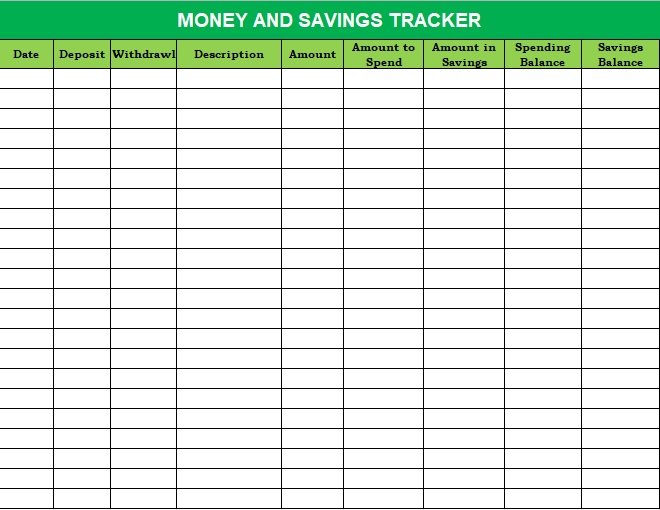Why Saving $2000 in Two Months is a Realistic Target
Saving $2000 in two months may seem like a daunting task, but with a clear plan and determination, it can be a realistic target. Setting a specific savings goal can help individuals stay motivated and focused on their financial objectives. By having a concrete target in mind, individuals can create a sense of urgency and direction, which can help them make conscious financial decisions. Moreover, achieving a savings goal can boost confidence and provide a sense of accomplishment, encouraging individuals to continue working towards their long-term financial objectives.
Breaking down the goal into smaller, manageable chunks can also make it feel less overwhelming. For instance, saving $2000 in two months translates to saving approximately $1000 per month or $250 per week. By focusing on these smaller targets, individuals can create a sense of progress and momentum, which can help them stay on track. Additionally, having a specific savings goal can help individuals prioritize their spending and make conscious decisions about how they allocate their resources.
Furthermore, saving $2000 in two months can provide a sense of financial security and peace of mind. Having a cushion of savings can help individuals weather unexpected expenses or financial setbacks, reducing stress and anxiety. By working towards this goal, individuals can create a sense of stability and confidence in their financial situation, which can have a positive impact on their overall well-being.
Assessing Your Finances: Understanding Your Income and Expenses
To create an effective savings plan, it’s essential to understand where your money is going. Tracking your income and expenses can help you identify areas for reduction and make conscious decisions about how to allocate your resources. Start by gathering all your financial documents, including pay stubs, bank statements, and bills. Then, categorize your expenses into needs (housing, food, and utilities) and wants (entertainment, hobbies, and travel).
Next, create a budget that accounts for all your income and expenses. You can use a budgeting app or spreadsheet to make it easier to track your spending. Be sure to include a category for savings, and aim to allocate at least 10% to 20% of your income towards your savings goal. By understanding your financial situation, you can make informed decisions about how to reduce expenses and increase savings.
For example, if you’re trying to save $2000 in two months, you’ll need to save approximately $1000 per month. By tracking your income and expenses, you can identify areas where you can cut back on unnecessary spending and allocate that money towards your savings goal. Remember, small changes can add up over time, and making a few adjustments to your budget can have a significant impact on your savings.
Additionally, consider implementing a 50/30/20 rule, where 50% of your income goes towards needs, 30% towards wants, and 20% towards savings and debt repayment. This can help you prioritize your spending and ensure that you’re allocating enough money towards your savings goal.
Creating a Savings Plan: Breaking Down the Goal into Manageable Chunks
Now that you have a clear understanding of your finances, it’s time to create a savings plan that will help you reach your goal of saving $2000 in two months. Breaking down the goal into smaller, achievable targets can make it feel less overwhelming and more manageable. For example, you can divide the goal into weekly or monthly targets, such as saving $250 per week or $1000 per month.
Automating your savings is also crucial to reaching your goal. Set up a direct deposit or transfer from your checking account to your savings account, so that a fixed amount is transferred regularly. This way, you’ll ensure that you’re saving a fixed amount regularly, without having to think about it. You can also take advantage of employer-matched retirement accounts, such as a 401(k) or IRA, to boost your savings.
Another strategy is to use the 52-week savings challenge, where you save an amount equal to the number of the week. For example, in week 1, you’ll save $1, in week 2, you’ll save $2, and so on. This challenge can help you build momentum and make saving a habit.
Remember, the key to reaching your savings goal is to make it a priority and to be consistent. By breaking down the goal into smaller targets and automating your savings, you’ll be well on your way to saving $2000 in two months. Stay committed, and you’ll be celebrating your success in no time.
Reducing Expenses: Strategies for Cutting Back on Unnecessary Spending
Reducing expenses is a crucial step in saving $2000 in two months. By cutting back on unnecessary spending, you can free up more money in your budget to put towards your savings goal. One effective way to reduce expenses is to cancel subscription services that you don’t use regularly. Take a close look at your monthly subscriptions, such as streaming services, gym memberships, and magazine subscriptions. Cancel any that you don’t use regularly, and consider downgrading or negotiating a better rate for the ones you do use.
Cooking at home is another great way to reduce expenses. Eating out can be expensive, and cooking at home can save you a significant amount of money. Try meal planning and batch cooking to make the most of your grocery budget. You can also reduce food waste by planning your meals and using up leftovers.
Avoiding impulse purchases is also essential to reducing expenses. Take time to think before making a purchase, and ask yourself if it’s really necessary. Consider implementing a 30-day waiting period before making non-essential purchases. This can help you avoid buying things on impulse and reduce unnecessary spending.
Small changes can add up over time, and reducing expenses can have a significant impact on your savings. By cutting back on unnecessary spending, you can free up more money in your budget to put towards your savings goal. Remember, saving $2000 in two months requires discipline and patience, but with the right strategies, you can reach your goal and achieve financial stability.
Increasing Income: Exploring Ways to Boost Your Earnings
Increasing income is a crucial step in saving $2000 in two months. By boosting your earnings, you can free up more money in your budget to put towards your savings goal. One effective way to increase income is to take on a side job or freelance work. This can be done in addition to your regular job, and can provide a significant boost to your earnings.
Selling unwanted items is another great way to increase income. Take a close look at your belongings and identify items that you no longer need or use. Sell these items online or at a garage sale, and put the proceeds towards your savings goal. You can also consider selling handmade goods or services, such as pet-sitting or house-sitting.
Pursuing additional education or training can also increase your earning potential. Consider taking courses or getting certified in a field that interests you, and use this new skill to boost your income. This can be done through online courses, vocational training, or even a part-time degree program.
Other ways to increase income include asking for a raise at your current job, starting a blog or YouTube channel, or even renting out a spare room on Airbnb. The key is to be creative and think outside the box when it comes to increasing your income. By doing so, you can free up more money in your budget to put towards your savings goal and reach your target of saving $2000 in two months.
Staying Motivated: Overcoming Obstacles and Staying on Track
Staying motivated is crucial when trying to save $2000 in two months. It’s easy to get discouraged when faced with unexpected expenses or a lack of motivation. However, there are several strategies that can help you stay on track and overcome common obstacles.
One effective way to stay motivated is to share your goals with a friend or family member. This can provide an added level of accountability and encouragement. You can also consider joining a savings challenge or finding a savings buddy to help keep you motivated.
Using a savings app can also be a great way to stay on track. These apps can help you track your progress, set reminders, and even automate your savings. Some popular savings apps include Qapital, Digit, and Acorns.
Another strategy is to reward yourself for reaching certain milestones. For example, you could treat yourself to a nice dinner or a weekend getaway when you reach the halfway point of your savings goal. This can help provide a sense of accomplishment and motivation to keep going.
It’s also important to remember that setbacks are a normal part of the savings process. Don’t get discouraged if you miss a payment or two – simply get back on track and keep moving forward. By staying motivated and focused, you can overcome any obstacle and reach your goal of saving $2000 in two months.
Visualizing Success: The Power of Positive Thinking in Achieving Your Goal
Visualizing success is a powerful tool in achieving your savings goal of $2000 in two months. By maintaining a positive mindset and focusing on your goal, you can stay motivated and driven to succeed. One effective way to visualize success is to create a vision board. This is a visual representation of your goals and desires, and can be a powerful tool in helping you stay focused and motivated.
Another way to visualize success is to set reminders and milestones along the way. This can help you stay on track and motivated, and can also provide a sense of accomplishment and progress. You can also try writing down your goals and desires, and reading them regularly to help stay focused and motivated.
Positive thinking is also essential in achieving your savings goal. By focusing on the positive aspects of your goal, and visualizing success, you can stay motivated and driven to succeed. Remember, saving $2000 in two months is a challenging goal, but with the right mindset and strategies, it is achievable.
It’s also important to celebrate your successes along the way. By acknowledging and celebrating your progress, you can stay motivated and encouraged to continue working towards your goal. This can be as simple as treating yourself to a nice dinner or a weekend getaway, or as significant as making a major purchase or investment.
Reaching the Finish Line: Celebrating Your Success and Building Momentum
Congratulations on reaching your savings goal of $2000 in two months This is a significant achievement, and you should be proud of yourself for staying committed and focused on your financial objectives. Reaching this milestone is not only a testament to your discipline and determination but also a stepping stone to achieving long-term financial stability.
Now that you’ve reached your savings goal, it’s essential to build on your success and continue saving. Consider setting a new savings goal, such as saving for a down payment on a house, a car, or a vacation. You can also explore other savings options, such as a high-yield savings account or a certificate of deposit (CD).
Remember, saving is a long-term process, and it’s essential to stay consistent and patient. Avoid the temptation to splurge on non-essential items, and instead, focus on building a safety net and achieving long-term financial security.
By continuing to save and build on your success, you’ll be well on your way to achieving financial stability and securing a brighter financial future. Keep up the good work, and remember that saving $2000 in two months is just the beginning of your financial journey.







